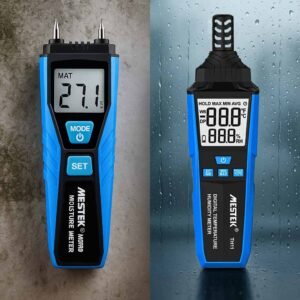From understanding a multimeter to using it like a pro. Whether you are a DIY enthusiast or a professional technician, it is important to know how to use a multimeter. This guide focuses on digital multimeters.
Recognize the symbols of a multimeter
When you see the dial of a digital multimeter, are you scared by the dense numbers? Don’t worry, a table will help you understand the multimeter symbols.
| V- | DC voltage | Measuring AC voltage at household sockets |
| V~ | AC voltage | Measures DC voltage, typically found in batteries |
| A | Current | Measures current (applicable in both AC and DC modes) |
| Ω | Resistance | Measures the resistance of a circuit or component |
| NCV | Non-Contact Voltage Test | Avoid direct contact with live wires |
| Hz | Frequency | Measures the frequency of a signal, commonly used in audio, radio, etc |
| ▶|I | Diode | Tests diodes to confirm that current flows in one direction |
| 🔊 | buzzer | Tests circuit integrity by sounding a beep |
Digital multimeter are divided into manual multimeters used by professionals, and automatic and smart multimeters for daily use. In the early learning stage, we recommend using an automatic or smart multimeter because it is easy to use and has higher accuracy.

Use of test leads
Insert the red test lead into the VΩ hole and the black test lead into the COM hole to measure DC voltage, AC voltage, resistance, capacitance, diode, transistor, check circuit continuity, etc. Insert the black test lead into the COM hole, measure mA level current or μA level current and insert the red test lead into the mA current dedicated jack. The COM hole, also known as the common end, is a jack specifically inserted into the black test lead. To measure currents higher than mA level, insert the red test lead into the 10A or 20A hole and the black test lead into the COM hole.

Multimeter Application
(1) Voltage test: Measures battery voltage, wall outlet power, or circuit board voltage.
(2) Current test: Identifies current in a circuit to troubleshoot.
(3) Resistance test: Checks for faults in resistors, wires, or electronic components.
(4) Diode test: Verifies diode functionality and polarity.
(5) Continuity test: Ensures wiring connections are intact, especially useful in automotive and home repairs.
When using a multimeter, you should always check whether the recent instrument tools are reliable. Otherwise, it will cause you trouble next time you use it, and misjudgment will cause maintenance and inspection difficulties.





